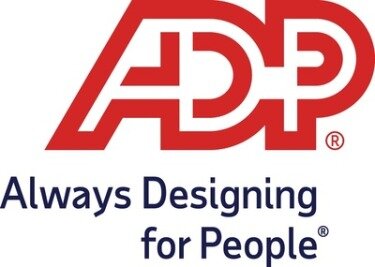
Raising long-term liabilities necessitates careful planning due to the long-term commitment involved. It requires estimating the funds needed for the long term and determining the appropriate mix of funds. Various sources, including long-term debt, bonds, debentures, etc., can be utilized to raise these funds.

No one likes debt, but it’s an unavoidable part of running a small business. Accountants call the debts you record in your books “liabilities,” and knowing how to find and record them is an important part of bookkeeping and accounting. A contingent liability is an obligation that might have to be paid in the future, but there are still unresolved matters that make it only a possibility and not a certainty.
Owner’s Equity
That’s because these obligations enable companies to reap immediate benefit now and pay later. For example, by borrowing debt that are due in 5-10 years, companies immediately receive the debt proceeds. The one year cutoff is usually the standard definition for Long-Term Liabilities (Non-Current Liabilities). That’s because most companies have an operating cycle shorter than one year.
What Is Long-Term Debt? – Money
What Is Long-Term Debt?.
Posted: Thu, 13 Apr 2023 07:00:00 GMT [source]
Accrued expenses are expenses that you’ve already incurred and need to account for in the current month, though they won’t be paid until the following month. In financial statements, companies use the term “other” to refer to anything extra that is not significant enough to identify separately. Because they aren’t deemed particularly noteworthy, such items are grouped together rather than broken down one by one and ascribed an individual figure. Long-Term Liabilities are very common in business, especially among large corporations. Nearly all publicly-traded companies have Long-Term Liabilities of some sort.
Accounting Principles II
The same as other liabilities accounts, salary payables increase is recorded on the credit side, and when it is decreasing is recorded on the debit side. The recording is different from the recording of assets or expenses, which is the same as revenues and equity. These are debt instruments that require periodic interest payments. In addition, you owe principal repayments over the life of the bond. By far the most important equation in credit accounting is the debt ratio.

A company should take care that it keeps its long-term liabilities in check. If long-term liabilities are a high proportion of operating cash flows, it could create problems for the company. Similarly, if long-term liabilities show a rising trend, it could be a red flag. The bond makes regular coupon payments throughout its duration, representing the interest payment.
Short-Term Debt
Because most accounting these days is handled by software that automatically generates financial statements, rather than pen and paper, calculating your business’ liabilities is fairly straightforward. As long as you haven’t made any mistakes in your bookkeeping, your liabilities should all be waiting for you on your balance sheet. If you’re doing it manually, you’ll just add up every liability in your general ledger and total it on your balance sheet. Bonds payable are long-term debt securities issued by a corporation. Typically, bonds require the issuer to pay interest semi-annually (every six months) and the principal amount is to be repaid on the date that the bonds mature.
Liabilities refer to things that you owe or have borrowed; assets are things that you own or are owed. The combination of the last two bullet points is the amount of the company’s net income. To learn more about the components of stockholders’ equity, visit our topic Stockholders’ Equity. Once you identify all of your liabilities and assets, you can find your net worth. Many or all of the products featured here are from our partners who compensate us.
SEC Adopts Comprehensive Cybersecurity Disclosure … – Cooley LLC
SEC Adopts Comprehensive Cybersecurity Disclosure ….
Posted: Wed, 02 Aug 2023 15:57:51 GMT [source]
Like bonds, debentures receive a credit rating based on risk level. However, if the company does not make the payment on time during the month that the service is provided, salary expense is considered payable and reported on the balance sheet. It is sometimes easy payroll software for startups and entrepreneurs recorded under the cost of goods sold, cost of services, or operating expenses depending on how the staff is involved in the operation. Salary payable is classified as a current liability account under the head of current liabilities on the balance sheet.
FAQs About Long Term Liabilities
It compares your total liabilities to your total assets to tell you how leveraged—or, how burdened by debt—your business is. Ford Motor Co. (F) reported approximately $28.4 billion of other long-term liabilities on its balance sheet for fiscal year (FY) 2020, representing around 10% of total liabilities. Lumping together a group of debts without identifying the nature of the debt might sound like a potential red flag.
Debentures provide a fixed coupon rate and have a predetermined redemption date. In some countries, “debenture” is used interchangeably with “bonds.” Furthermore, certain convertible debentures can be converted into equity shares after a specific period. Non-convertible debentures, in contrast, cannot be converted into equity shares and generally carry a higher interest rate.
Salary payable and accrued salaries expenses are the balance sheet account and are recorded under the current liabilities sections. This account decreases when the company makes payments to its staff. Additionally, a liability that is coming due may be reported as a long-term liability if it has a corresponding long-term investment intended to be used as payment for the debt . However, the long-term investment must have sufficient funds to cover the debt.
- All line items pertaining to long-term liabilities are stated in the middle of an organization’s balance sheet.
- However, the salary payables account is the balance sheet account that reports only the unpaid amount.
- The reason is that corporations will likely use the cash generated from its earnings to purchase productive assets, reduce debt, purchase shares of its common stock from existing stockholders, etc.
This influences which products we write about and where and how the product appears on a page. We’re firm believers in the Golden Rule, which is why editorial opinions are ours alone and have not been previously reviewed, approved, or endorsed by included advertisers. Editorial content from The Ascent is separate from The Motley Fool editorial content and is created by a different analyst team.
They can also finance research and development projects or fund working capital needs. Notes payable are similar to loans but typically have a shorter repayment period and may not include interest. Long-term liability can help finance a company’s long-term investment. In most cases, lenders and investors will use this ratio to compare your company to another company.
Depending on your payment schedule and your tax jurisdiction, taxes may need to be paid monthly, quarterly, or annually, but in all cases, they are likely due and payable within a year’s time. If you have a loan or mortgage, or any long-term liability that you’re making monthly payments on, you’ll likely owe monthly principal and interest for the current year as well. The balance of the principal or interest owed on the loan would be considered a long-term liability. Accounts payable liability is probably the liability with which you’re most familiar. For smaller businesses, accounts payable may be the only liability displayed on the balance sheet. Pension commitments given by an organization lead to pension liabilities.
Financial Liabilities vs. Operating Liabilities
However, even if you’re using a manual accounting system, you still need to record liabilities properly. The Balance Sheet integrally links with the Income Statement and the Cash Flow Statement. Therefore, changes on the Income Statement and the Cash Flow Statement will trickle over to the Balance Sheet. Some examples of how the Income Statement and the Cash Flow Statement can affect long term obligations are listed below. Notice that Current Liabilities is explicitly labeled and has its own subtotal. On the contrary, Non-Current Liabilities are not explicitly labeled.
Typically, the more time you have to build up your assets, the less weight your liabilities will carry. Our partners cannot pay us to guarantee favorable reviews of their products or services. If you’re using the wrong credit or debit card, it could be costing you serious money.
- It is important to realize that the amount of retained earnings will not be in the corporation’s bank accounts.
- Mary Girsch-Bock is the expert on accounting software and payroll software for The Ascent.
- And in most cases, it is also treated as the same from the tax perspective.
- The most common liabilities are usually the largest like accounts payable and bonds payable.
Our experts love this top pick, which features a 0% intro APR for 15 months, an insane cash back rate of up to 5%, and all somehow for no annual fee. But, sometimes this amount is not required to pay based on the company and staff’s different reasons. Hedging is a way to protect against potential losses by taking offsetting positions in different markets.
